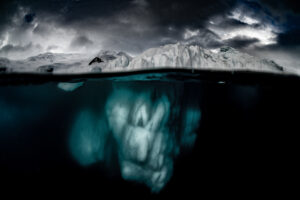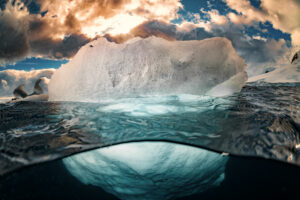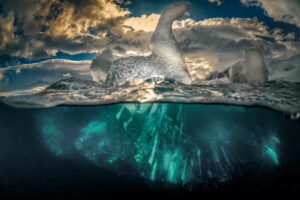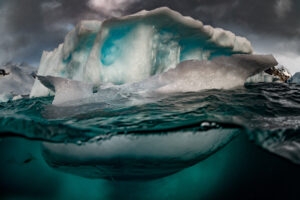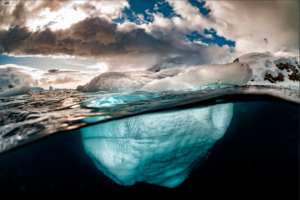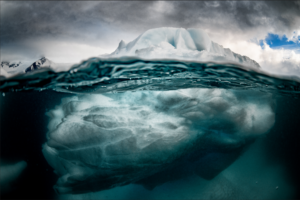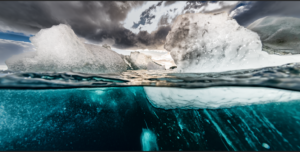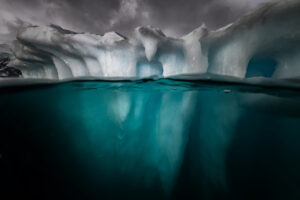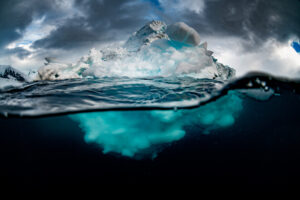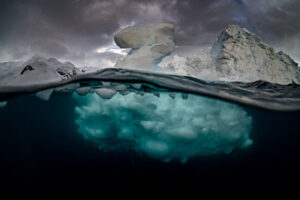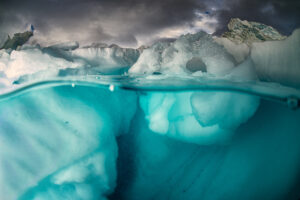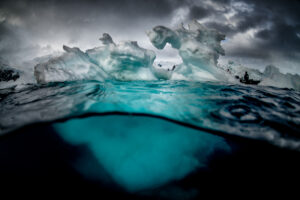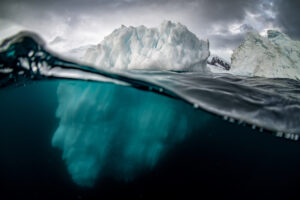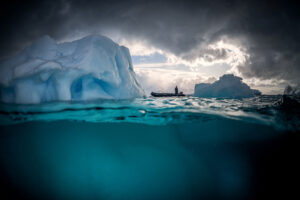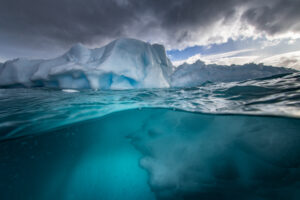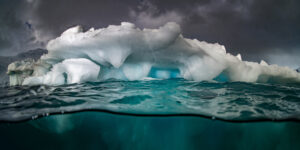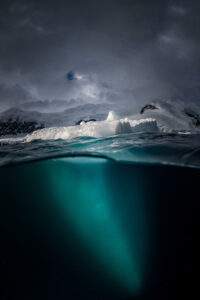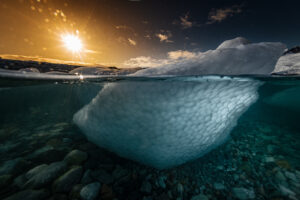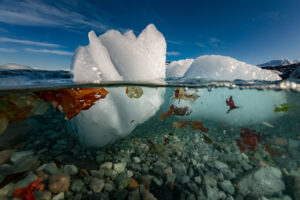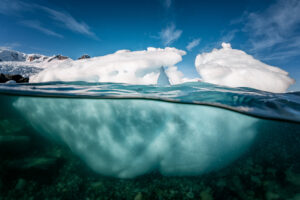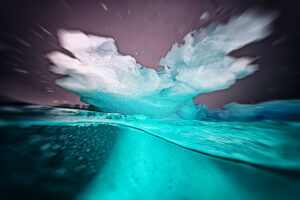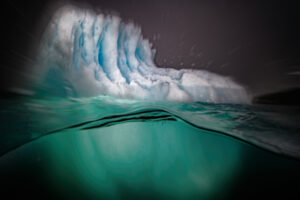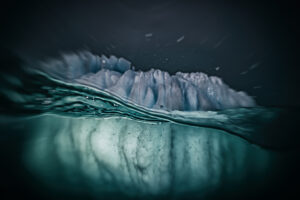Icebergs between sea & sky: Bummock and Hummock
Icebergs. They bear the trace of the wound of detachment. Once they were one, then they became two, then many. Ungainly and random fragments of a single mother. The earth. Of one father. Ice.
Only the 10% of an iceberg is what we see out of the water, the 90% is below the surface, hence the phrase “only the tip of an iceberg”.
Over-under photos are irrefutably eye-catching. They showcase an interesting perspective of two scenes within an image, telling a story above and below the water level. What lies underwater is often a mystery to many viewers. In the case of icebergs, a split shot shows the Bummock and the Hummock. The Bummock is the downward projection from the underside of an iceberg; the Hummock is the topside part.
All photos of this photographic work were taken while diving or snorkeling in the water during a climate change expedition with the Aurora Expeditions and Ocean Geographic in February 2023 around the Antarctic Peninsula.
An iceberg is a large piece of freshwater ice is floating freely in open (salt) water. To be an iceberg, the height of the ice must be greater than 5 m (16 ft) above sea level and the thickness must be greater than 30 m (100 ft) and the ice must cover an area of at least 500 square m (5400 sq ft). Floating pieces of ice smaller than this are termed “bergy bits”, or smaller again, “growlers”.
Ice on land flows towards the ocean as glaciers and ice sheets. If the ice reaches the sea, it often continues to extend as a floating ice shelves or ice tongues. Pieces of ice naturally break off and float away – these are icebergs. When icebergs break off, the process is known as calving.
The story behind the making of:
It’s a cloudy chilly February afternoon in Antarctica. I’m in the water at -1,8 C degrees roaming between small icebergs, bergy-bits and growlers, this is how the icebergs are classified by size, looking for inspirational shots. Icebergs are natural sculptures carved and shaped by time and elements. They trap the past in form of ancient gases and other elements in their ice. They are frozen time capsules. I’m so intrigued by the fact that each iceberg’s shape, tell its story and its journey through the time and space. I feel excited but lost within this natural beauty. I would like to scout for hours that perfect ice-shape, but time runs fast, and my hands are already getting numb and only holding the bulky underwater camera and pressing the shutter button with the thick mittens on, is a real challenge. Holding the camera half to the surface (to make split shots) while getting the composition, is making my wrists and neck stiffer and painful. My feet are already frozen after a few minutes. I just float in the uncomfortable inflated dry suit, but I could cry for the happiness of being so lucky to experience all of that, to see live what just a few people could see. I’m getting my concentration back. I am now only focused on my work. I repeat to myself: do the best you can, get the best out of it…focus, shoot…clean the glass dome…focus, shoot again. I certainly did my best but not enough. The driver of my zodiac is always keeping an eye on me and the other photographer Jennifer Hayes. Getting lost in this infinite space between moving pieces of floating ice, icebergs and bergy bits it’s easy. We are small floating spots in a dark sea, easily hidden by mass of ice. Focusing on my work, I get lost in such beauty, slowly drifting away from the sight of my guardian on the zodiac. I can easily get caught in between two growlers or bergy bits, tons of ice that could crush me like a beer can. Our zodiac driver, Edwin, becomes a bit anxious when me and Jenny come too close to unstable icebergs. He worn as about the imminent danger of being too close: a floating piece of ice, whether is a big iceberg or a bergy bit, can flip over in ten seconds and kill anybody who’s around it. I know that my time in the water is limited due to the cold, but I can’t stop searching new angles, different shapes and textures. I look at my watch and I realize that I went too far with being in the water. Edwin is trying to recall me on board despite my reluctance, we still have an hour or more of navigation to get back to the Sylvia Earle mother ship and it’s time to swim back to the zodiac. Edwin made me note that I’ve spent ninety minutes in the water, the double allowed for security reason. Those 90 minutes in the water might froze my face, my hands and my feet, but made my heart warmer than ever.
Looking at the photos after the expedition, I can feel all those sensations. I only want to go back in that magical Antarctica.
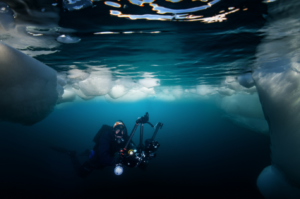
Lorenzo Mittiga under the Antarctic ice
Photo ©Elisabetta Maccari
